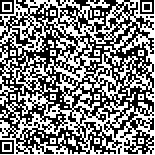| This Paper:Browse 1059 Download 61 |

码上扫一扫! |
| Editorial: Special issue on emerging challenges in multi-agent sensing, control and optimization |
| BijoyKumarGhosh,JiangpingHu,XiaomingHu |
|
|
| (Texas Tech University, Lubbock, USA;University of Electronic Science and Technology of China, Chengdu, China;KTH Royal Institute of Technology, Stockholm, Sweden) |
|
| 摘要: |
| Up to now, a large number of theoretical achievements and application scenarios have been obtained in sensing, control and optimization of multi-agent systems. However, challenges are still emerging from the rapid development of artificial intelligence and urgent need for distributed computing. The aim of the special issue is to present in a systematic way some new results in the fields of distributed sensing, control and optimization of cyber-physical systems, particularly in resource allocation, machine learning, observer and filtering, consensus and constrained control.
The collection consists of nine research papers and one letter, and can be divided into five groups: the first group is about distributed optimization. Y. Wang et al. studied a resource allocation problem using stochastic mirror descent algorithm. The second group focuses on machine learning. J. Okae et al. presented a robust statistical approach to noise detection and refinement of Winner-Takes-All (WTA) disparity maps that improves the stereo labeling performances of convolutional neural networks (CNNs). A distributed policy evaluation was studied in the paper by X. Zhao et al. for multi-agent reinforcement learning using an inexact ADMM (alternating directions method of multipliers) algorithm. Z. Peng et al. developed a distributed multi-agent temporal-diff erence (TD) learning framework for value function approximation using all the neighbors’information. The third group includes two papers about distributed observers and filters. D. Xu et al. proposed a class of distributed tracking observers with locally jointly observable sensors. A consistent Kalman-type nonlinear filter was applied to the track-to-track association analysis of multi-targets with uncertain dynamics in the paper by X. He et al. The fourth group includes two papers on consensus. A privacy-preserving consensus problem was solved in the paper by S. Zhang and M. Dahleh using a Shamir’s secret sharing scheme. J. Wei et al. proposed a finite-time consensus control strategy based on a direction preserving signum method. The last group of this collection includes two papers with cyber-physical background. B. K. Ghosh and B. Athukorallage constructed a single Riemannian metric to study a combined optimal gaze rotation for two eyes and an optimal external torque was obtained for eye movement maneuvers. X. Yin introduced recent advances on formal methods for safety and security of cyber-physical systems. |
| 关键词: |
| DOI:https://doi.org/10.1007/s11768-020-00024-w |
|
| 基金项目: |
|
| Editorial: Special issue on emerging challenges in multi-agent sensing, control and optimization |
| Bijoy Kumar Ghosh,Jiangping Hu,Xiaoming Hu |
| (Texas Tech University, Lubbock, USA;University of Electronic Science and Technology of China, Chengdu, China;KTH Royal Institute of Technology, Stockholm, Sweden) |
| Abstract: |
| Up to now, a large number of theoretical achievements and application scenarios have been obtained in sensing, control and optimization of multi-agent systems. However, challenges are still emerging from the rapid development of artificial intelligence and urgent need for distributed computing. The aim of the special issue is to present in a systematic way some new results in the fields of distributed sensing, control and optimization of cyber-physical systems, particularly in resource allocation, machine learning, observer and filtering, consensus and constrained control.
The collection consists of nine research papers and one letter, and can be divided into five groups: the first group is about distributed optimization. Y. Wang et al. studied a resource allocation problem using stochastic mirror descent algorithm. The second group focuses on machine learning. J. Okae et al. presented a robust statistical approach to noise detection and refinement of Winner-Takes-All (WTA) disparity maps that improves the stereo labeling performances of convolutional neural networks (CNNs). A distributed policy evaluation was studied in the paper by X. Zhao et al. for multi-agent reinforcement learning using an inexact ADMM (alternating directions method of multipliers) algorithm. Z. Peng et al. developed a distributed multi-agent temporal-diff erence (TD) learning framework for value function approximation using all the neighbors’information. The third group includes two papers about distributed observers and filters. D. Xu et al. proposed a class of distributed tracking observers with locally jointly observable sensors. A consistent Kalman-type nonlinear filter was applied to the track-to-track association analysis of multi-targets with uncertain dynamics in the paper by X. He et al. The fourth group includes two papers on consensus. A privacy-preserving consensus problem was solved in the paper by S. Zhang and M. Dahleh using a Shamir’s secret sharing scheme. J. Wei et al. proposed a finite-time consensus control strategy based on a direction preserving signum method. The last group of this collection includes two papers with cyber-physical background. B. K. Ghosh and B. Athukorallage constructed a single Riemannian metric to study a combined optimal gaze rotation for two eyes and an optimal external torque was obtained for eye movement maneuvers. X. Yin introduced recent advances on formal methods for safety and security of cyber-physical systems. |
| Key words: |

